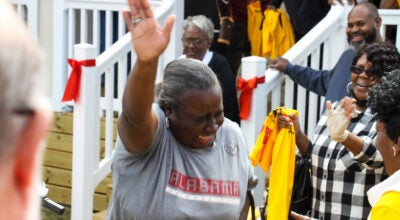New nationwide civil rights trail comes through Selma
Published 1:56 pm Wednesday, January 17, 2018
By Adam Dodson | The Selma Times-Journal
On Martin Luther King Jr. Day, Alabama Gov. Kay Ivey announced a new civil rights path that covers 12 states. The announcement comes after more than two years of planning.
The new path will cover over 130 sites from Topeka, Kansas to Washington, D.C. Of these sites, 29 of them are located in Alabama, including seven located in Selma.
The locations selected to be a part of this trail include:
•Brown Chapel AME Church
•Edmund Pettus Bridge
•Lowndes Interpretive Center
•Selma Interpretive Center
•National Voting Rights Museum and Institute
•Selma to Montgomery National Historic Trail
•The Sullivan and Richie Jean Sherrod Jackson Foundation and Museum
According to Sheryl Smedley, executive director of Selma and Dallas County Commerce and Tourism Department, tourism in Selma has increased in recent years.
It is believed that the new civil rights trail will increase tourism in Selma further while teaching people about Alabama’s history with the civil rights movement.
Mayor Darrio Melton also expressed his enthusiasm about the civil rights trail and his belief of how it will impact Selma.
“I think the sites that are being recognized will add to the tourism in Selma,” Melton said.
While many of the landmarks throughout the trail are churches or courthouses, Selma’s unique landmarks include a bridge, two museums, two interpretive centers and one trail. Brown Chapel makes up the only church selected to be a landmark.
Selma’s seven landmarks were the second-most out of Alabama, with Montgomery being the first with 10 sites.
Other Alabama cities with landmarks include Birmingham and Tuskegee with four sites a piece, and another four cities with one site a piece (Anniston, Monroeville, Scottsboro, Tuscaloosa).
The diversity of landmarks gives Selma a special historic characterization.
“With this new trail, you see how all the attractions come together and impact one another,” Smedley said.
“You can find history on every corner of Selma.”
While local officials are excited to see what this holds in store for Selma, they are not the only ones happy with the new trail. Many of the locations chosen will likely see an increase in how often they are frequented.
One of these places, the Sullivan and Richie Jean Sherrod Jackson Foundation and Museum, expressed their elation with the civil rights trail. Commonly referred to as the “Jackson House,” it is one of the places where Dr. King stayed during his visits to Selma.
“I am delighted that the Jackson House was chosen to be a part of something that tells a larger story,” Joanna Jackson, CEO of the Jackson House, said. “It is a wonderful development for this country and is going to show the impact he had on the civil rights movement.”
While the trail is predicted to bolster tourism, people have already been visiting Selma at higher rates than years past. According to Smedley, the movie “Selma,” the annual bridge-crossing Jubilee and the Alabama Tourism Department have all played an important role in the tourism increase.





